Secrets from a Pro: How to Make Your Home Look Expensive (Without a Huge Budget)
So you’re scrolling through those perfect-looking homes online and feeling that familiar pang. You think, “An elegant, high-end look like that must cost a fortune.” I’ve been in the design world for a long time, and I can tell you a secret: that’s rarely the case. True style isn’t about having the biggest budget; it’s about making smart, deliberate choices that make your space feel harmonious, high-quality, and genuinely calm.
In this article
- First Things First: Master Your Space Before You Buy Anything
- Invest in Character, Not Matching Sets
- Upgrade the Little Things: The Power of Touchpoints
- Tame the Tech: The Art of Hiding Wires
- Build from the Ground Up: Flooring and Rugs
- Layer Like a Pro: The Magic of Texture
- The Final Polish: Windows and Curb Appeal
- Inspirational Gallery with Photos
It’s a skill you learn from being in the trenches—sourcing materials, managing projects, and seeing what actually works. It all comes down to understanding the why behind certain design moves. It’s about knowing where to put your money for the biggest impact and, honestly, where you can save a buck without anyone noticing. A sophisticated home just feels intentional and thoughtfully put together. This guide will walk you through the techniques the pros use to get that look, focusing on principles, not just pricey products.
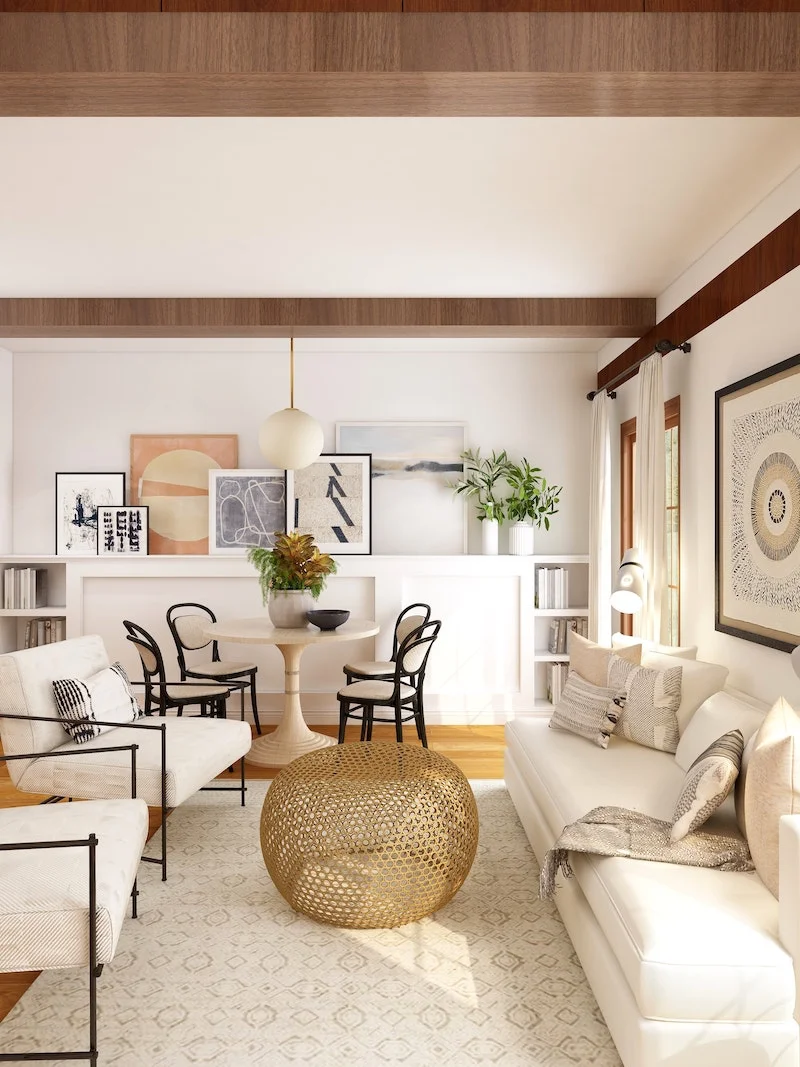
First Things First: Master Your Space Before You Buy Anything
Before you even think about a new sofa or that cool lamp, we need to talk about the room itself. The most common problem I see in a home that feels a little ‘off’ is a poor use of space and light. A cluttered room, no matter how expensive the stuff in it, will always feel chaotic. But a well-organized space? Even with the simplest furniture, it feels calm and luxurious.
This is the first and most important step. And the best part? It costs you nothing but a bit of your time.
The Art of Visual Calm
Let’s get into a little brain science. Our minds are literally hardwired to find order pleasing. When a room has clear walkways and uncluttered surfaces, it reduces our mental workload. We can actually relax. This is where ‘negative space’ comes in—the empty areas are just as important as the filled ones. They give your eyes a place to rest and make the pieces you do have really shine. Luxury is often about what isn’t there: an absence of chaos and a surplus of breathing room.
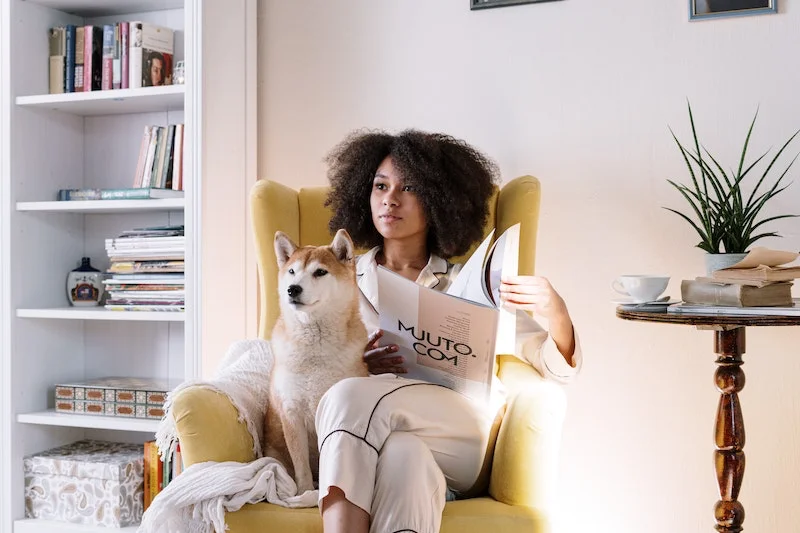
A Pro-Level Decluttering Method: ‘The Edit’
Most of us know we should declutter, but we often just shuffle things around. To do it right, you need a system. I call this process ‘The Edit.’ It’s more than tidying; it’s a full-on evaluation of every single thing in a room. Plan to block out a full weekend for one room to do this right.
- Start with a Clean Slate: Take every single decorative object, photo frame, book, and knick-knack off every surface. Put it all in one spot, like on your dining room table. This forces you to see the room’s ‘bones.’
- Assess the Big Stuff: With the clutter gone, look at your main furniture. Are you weaving around a coffee table to get to the sofa? Try pulling furniture away from the walls. Just a few inches can make a room feel way bigger and more intentional.
- The Three-Box Sort: Now, face the pile of stuff you removed. Grab three boxes and label them: ‘Keep in Room,’ ‘Move or Store,’ and ‘Donate or Toss.’ Be brutally honest. Does this thing have a real purpose, or do you truly love it? If not, it has to go.
- Style It Back In: Finally, bring back only the ‘Keep in Room’ items. But don’t put them back where they were before! Group items in odd numbers, like threes or fives. Play with height and texture. A stack of two books, a small plant, and a single cool object is a thousand times more interesting than ten little things scattered about.
Quick Win Challenge: Feeling overwhelmed? Don’t tackle a whole room. Just take 15 minutes today and clear ONE surface, like your coffee table or kitchen counter. Use the ‘Keep, Move, Toss’ method on just those items. It’s a small change that feels huge!
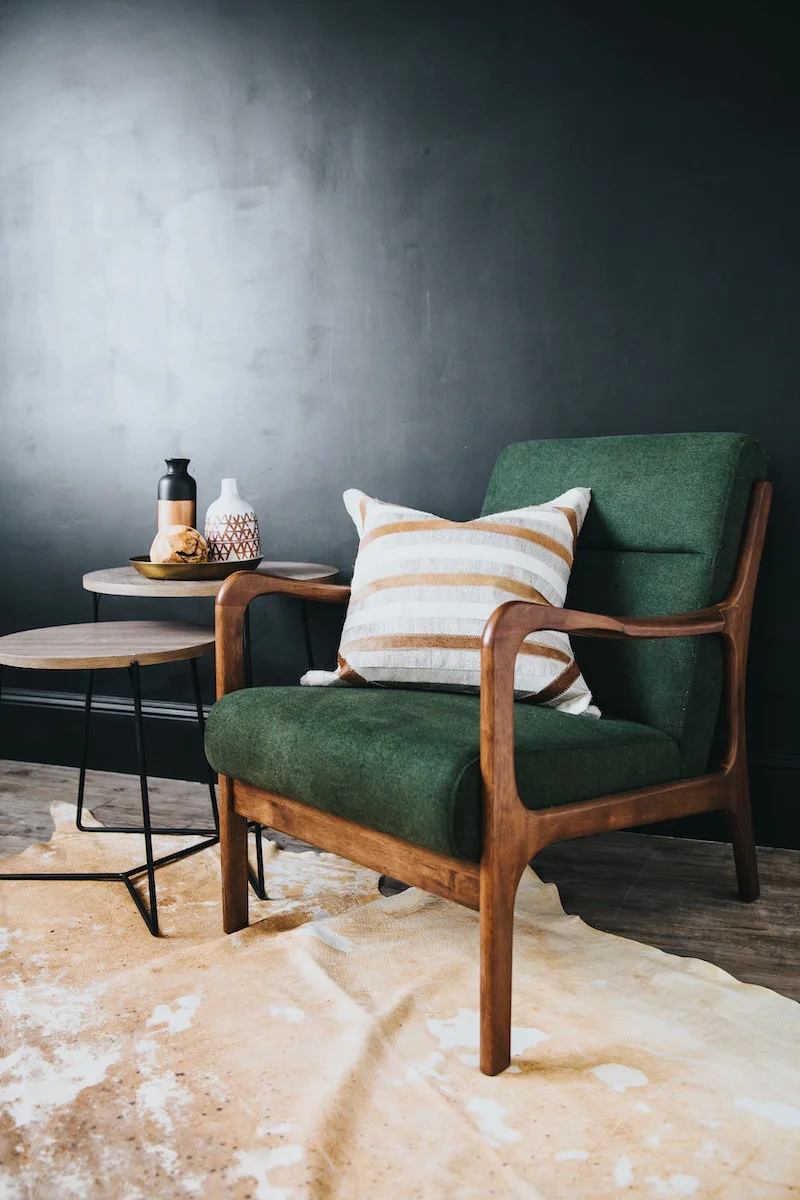
Invest in Character, Not Matching Sets
Here’s a hard truth: one of the fastest ways to make a room look generic is to buy a matching five-piece furniture set. You know the one—the sofa with the perfectly matching loveseat and armchair. That’s a retail invention for easy sales, not for creating a space with personality. A curated, high-end room gets its soul from a thoughtful mix of pieces.
The ‘Anchor Piece’ Strategy
Instead of spreading your money thin on a bunch of so-so items, focus your budget on one or two ‘anchor pieces.’ This is a classic designer trick to ground a room. An anchor piece has solid construction, a strong personality, and a timeless feel. It could be a solid wood dining table, a beautifully made sofa, or a unique vintage credenza you found.
You don’t need to spend a fortune, either. A great anchor could be a $400 solid wood sideboard from an estate sale or a $1,500 well-made sofa from a direct-to-consumer brand. The point is to prioritize that one amazing item over five cheap ones. Once you have that strong anchor, you can surround it with more budget-friendly pieces, and the whole room will feel more expensive.
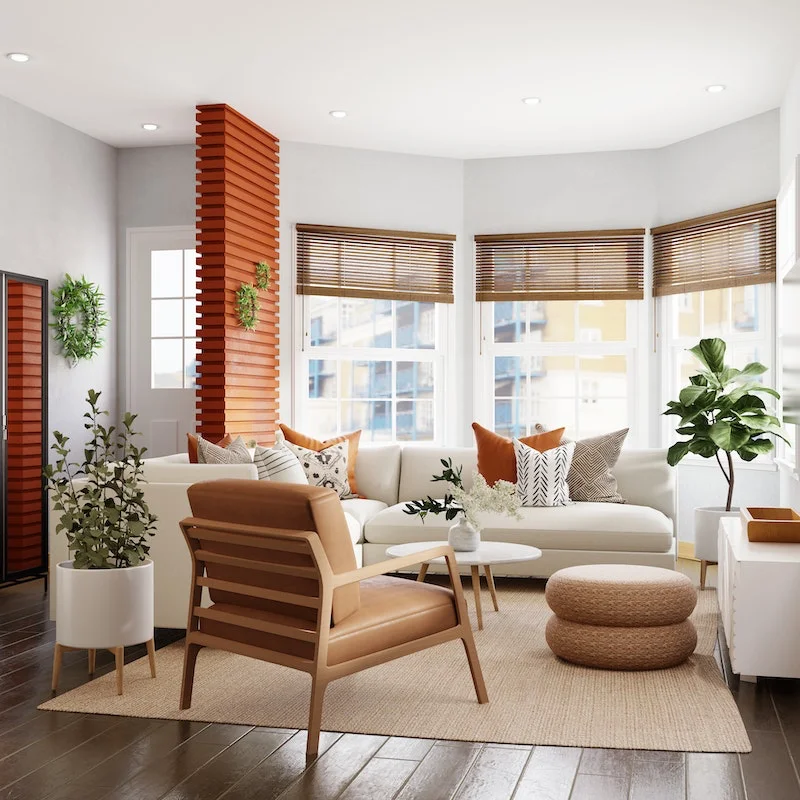
How to Spot a Diamond in the Rough
I get some of my best finds for clients from consignment shops, estate sales, and online marketplaces. You can find incredible quality for pennies on the dollar if you know what you’re looking for.
- Check the Bones: Is it solid wood or cheap particle board with a veneer? Look at the corners and edges. Solid wood has a consistent grain that goes all the way through. Particle board might have a plastic-y edge band or show a sawdust texture if it’s chipped.
- Do the Wiggle Test: Give it a good shake. Is it sturdy? Check the drawers for dovetail joints—that’s a classic sign of quality craftsmanship. Avoid anything held together with just staples and glue.
- Know Your Woods: It pays to learn the basics. Oak is heavy with a big, open grain. Walnut is darker with a finer, smoother grain. Pine is a softwood and dents easily, so be gentle. The great thing about solid wood is that it can almost always be refinished.
Oh, and let me share a lesson I learned the hard way. Early in my career, I found a gorgeous vintage sideboard for a client. The price was a steal! I checked the joints, and it felt solid. What I didn’t check for was woodworm. We got it home, and under the lights, I saw the tiny pinprick holes. We had to pay for a professional treatment, which ate up the savings. Now, I always carry a small flashlight to inspect the undersides and back of any piece. It’s a small step that prevents big, costly surprises.
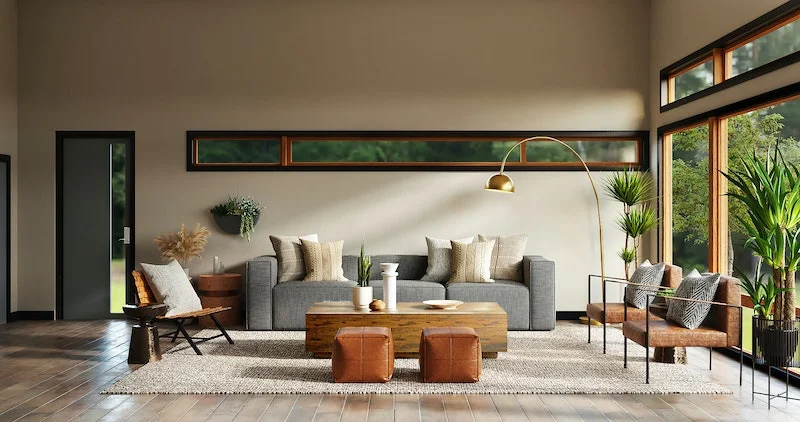
Upgrade the Little Things: The Power of Touchpoints
Think about the things you physically touch every day in your home: doorknobs, cabinet pulls, light switches. Designers call these ‘touchpoints.’ In a high-end home, these details are never an afterthought. Using heavy, solid hardware is a subtle but powerful way to signal quality. You can instantly feel the difference between a solid brass handle and a hollow, lightweight one.
Tell a Cohesive ‘Metal Story’
You don’t need every single metal in your house to match, but you should have a plan. I like to choose one dominant metal finish for a room, and maybe one accent metal. For example, in a kitchen, your cabinet hardware and faucet could be matte black, while your light fixtures could be a warm brushed brass. This kind of consistency is what makes a space feel intentional, not accidental.
You can find gorgeous, heavy hardware at places like Rejuvenation or Schoolhouse, but don’t sleep on sites like Amazon or even big-box stores like Home Depot for solid, budget-friendly options. Expect to pay between $5 and $20 per pull for good quality. A quick tip: always get samples! A ‘brushed gold’ from one brand can look totally different from another’s. Hold them up in your room’s actual light before buying the whole set.
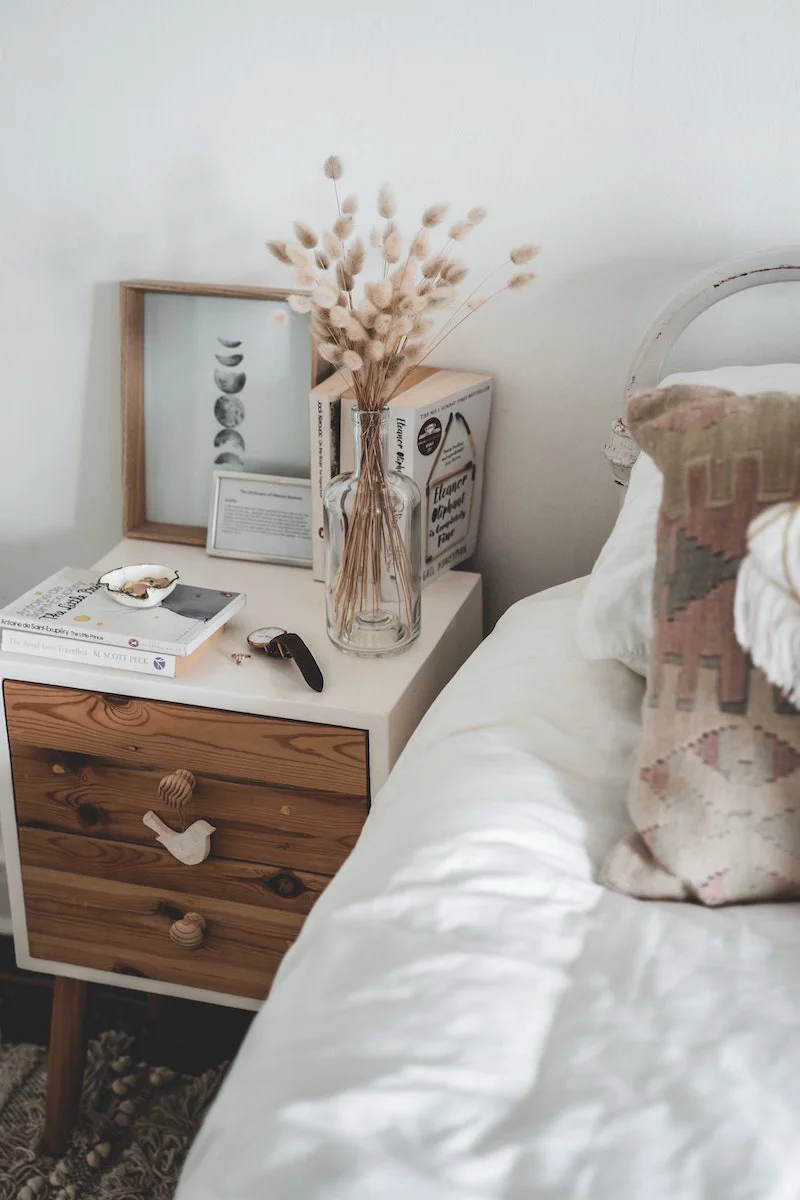
Heads up on safety! While changing a doorknob or cabinet pull is an easy DIY project you can do with a screwdriver, swapping light switches or fixtures is another story. If you’re not 100% confident with electrical work, please call a licensed electrician. It’s a small price to pay for the peace of mind that your home is safe and up to code.
Tame the Tech: The Art of Hiding Wires
Nothing—and I mean nothing—cheapens the look of a beautiful room faster than a tangled mess of wires. It’s visual noise, and it’s the sworn enemy of a calm, high-end look.
The Cleanest Look: In-Wall Solutions
For a truly professional look, especially around a wall-mounted TV, an in-wall cable management kit is your best friend. These kits let you safely run low-voltage cables like HDMI right behind the drywall. You can find them at most hardware stores for about $50-$80.
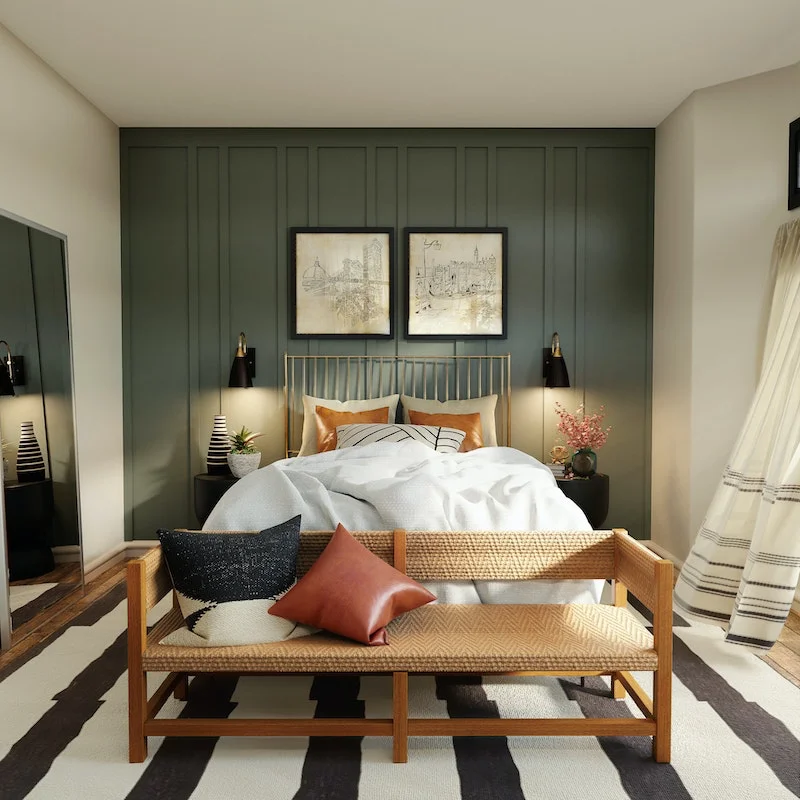
CRITICAL SAFETY NOTE: You must never, ever run the standard power cord that came with your TV inside a wall. It is a major fire hazard and violates electrical codes. The cord’s insulation isn’t rated for in-wall use. A proper, code-compliant kit has two outlets connected by a special, rated in-wall extension cord. That’s the safe and correct way to do it.
Easier, Budget-Friendly Wire Hiding
If cutting into your walls is a no-go, don’t worry. There are still plenty of elegant options.
- Cable Raceways: These are simple plastic channels that stick to your wall or baseboard. You tuck the cables inside, and you can even paint them to match your wall color. They just disappear.
- Fabric Cord Covers: For lamp cords, you can get woven fabric sleeves that bundle the cables together, turning an eyesore into a cool, textured detail.
- Strategic Furniture: A media console with a solid back is perfect for hiding power strips and extra cable length. A few zip ties or velcro strips can neatly bundle everything behind the scenes.
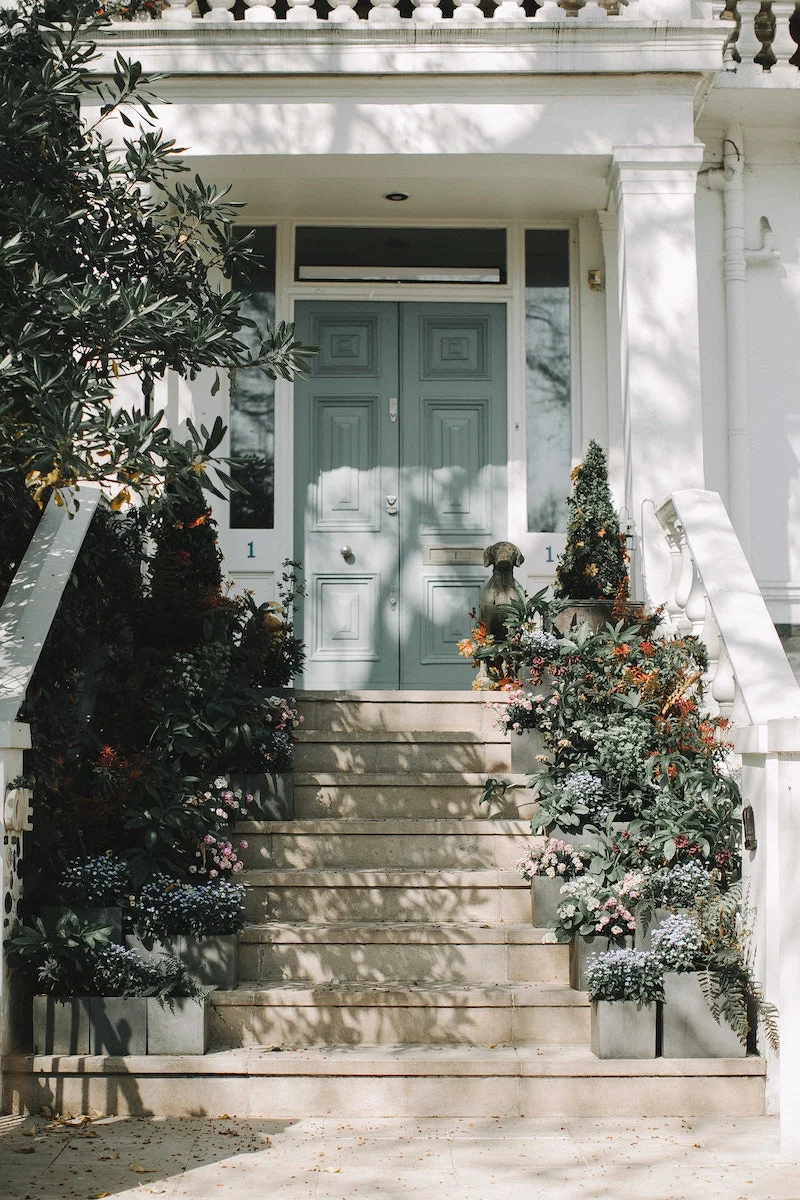
Build from the Ground Up: Flooring and Rugs
Your floor is the fifth wall of your room, and it sets the tone for everything else. This is a bigger investment, for sure—not a weekend project but a full-on renovation—but it has a massive impact. When budgeting, always add about 10-15% for unexpected issues like subfloor repairs.
Choosing the Right Foundation for Your Floor
Solid hardwood is a classic, but it’s not your only choice for a high-end look. When I work with clients, we think about their lifestyle.
Luxury Vinyl Plank (LVP) is incredible these days and is perfect for homes with kids, pets, or in basements because it’s waterproof and scratch-resistant. The key is to choose a quality product from brands like Coretec or Shaw with a matte finish and realistic texture. Expect to pay roughly $7-$12 per square foot, installed.
Engineered Hardwood is another great option. It has a real wood layer on top of a stable plywood core, which works better in humid areas and can often go over concrete slabs where solid wood can’t. It runs a bit more, maybe $9-$15 per square foot, installed.
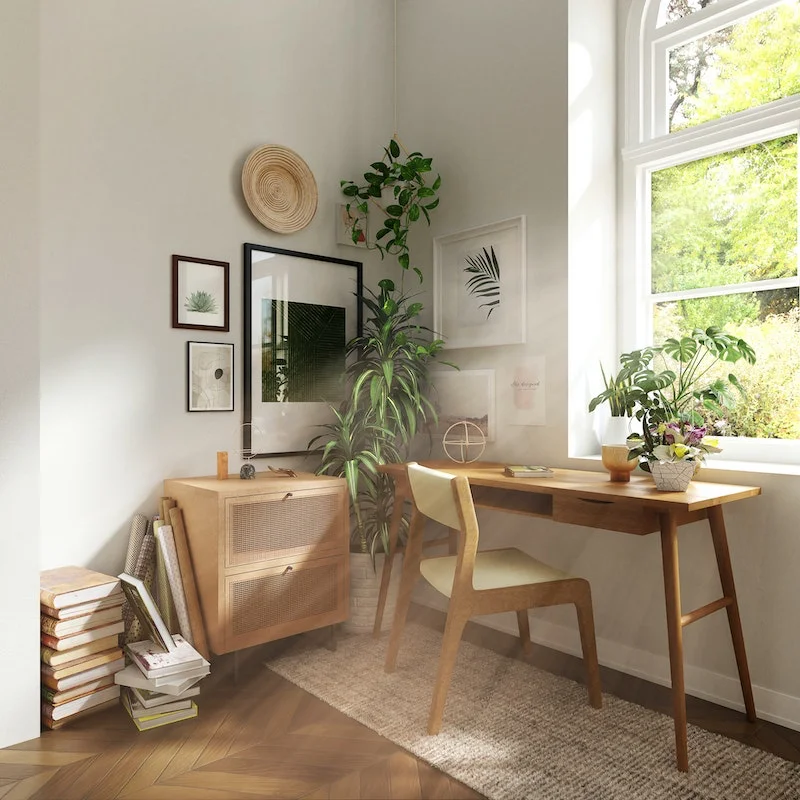
In modern homes or warmer climates, large-format tile (think big 24×24 or 24×48 inch tiles) creates a seamless, chic look, especially with thin grout lines. This can be one of the more expensive options, often starting around $15 per square foot installed.
The #1 Rug Mistake to Avoid
A rug that’s too small is probably the most common design mistake I see. Interior designers even have a name for them: ‘postage stamp’ rugs. They make a room feel smaller and disjointed.
A rug should be large enough to anchor the entire seating area. In a living room, at least the front two legs of your sofa and any armchairs should be on the rug. In a dining room, you need to be able to pull the chairs out to sit down, and have the back legs still be on the rug. Quick tip: Use painter’s tape to mark out the ideal rug size on your floor. It really helps you visualize the scale before you buy. Honestly, it’s better to have no rug at all than one that’s too small.
Layer Like a Pro: The Magic of Texture
Ever see a room that has nice furniture but still feels… flat? It’s almost always missing texture. Texture is what adds warmth, depth, and makes a space feel cozy and inviting. It’s what makes a house feel like a home.
Think about layering different materials. A smooth leather sofa becomes so much richer with a chunky knit throw blanket on it. A simple bed with linen sheets feels like a sanctuary when you add a couple of velvet pillows. Mix it up! Combine linen, wool, velvet, leather, and wood. For sofa pillows, ditch the two matching ones and try a more curated combo: two large 22-inch pillows in one fabric, two 20-inch ones in another, and a single rectangular lumbar pillow in a third accent material.
The Final Polish: Windows and Curb Appeal
These are the finishing touches that really separate a nice room from a professionally designed one. And they’re easier than you think.
The Right Way to Hang Curtains
This simple trick will change your life. Most people hang curtains wrong, making their ceilings feel low and their windows look tiny.
- Go High: Mount the curtain rod 4 to 6 inches above the window frame. This draws the eye up and creates the illusion of height.
- Go Wide: Extend the rod 6 to 10 inches past the window frame on each side. This makes the window look much bigger and lets you pull the curtains completely clear of the glass to maximize natural light.
- Go Long: Curtains should just ‘kiss’ the floor or puddle slightly (about an inch). Anything shorter looks awkward. Look for 96-inch or 108-inch panels, which you can find affordably at places like IKEA and Target. And a final pro-tip: choose fabrics like linen, cotton blends, or velvet. They hang so much better and look way more expensive than stiff polyester.
Weekend Curb Appeal for Under $150
Your home’s exterior is the first impression. You don’t need a huge overhaul to make it look great. For a high-impact weekend project, head to the hardware store. Grab about five bags of dark mulch, a simple half-moon edger tool, and two nice, matching planters. For a total cost of around $75 to $150, you can give your entrance a major facelift. A sharp, crisp edge on your garden beds, fresh mulch, and symmetrical planters by the door look incredibly clean and intentional.
Creating a home that feels elegant is a journey, not a shopping spree. It’s about learning to see your space with a designer’s eye and making choices with purpose. Start by creating a calm, decluttered foundation. Invest in a few key pieces with character. And never, ever underestimate the power of the small details. By following these principles, you can create a home that feels both luxurious and uniquely you, no matter what your budget is.
Inspirational Gallery with Photos
- Swap out standard kitchen cabinet handles for elegant brass pulls from a brand like Rejuvenation or an affordable alternative from Amazon.
- Replace generic doorknobs with heavier, more substantial matte black or antique brass models.
- Even light switch plates can be upgraded from basic plastic to a metal or screwless version for a subtle but polished finish.
The single biggest mistake that cheapens a room: Going too small with your anchor pieces.
A tiny rug floating in the middle of a room, or a small piece of art on a large wall, signals a hesitant approach. Be bold! A larger rug that your main furniture can sit on will make the room feel bigger and more grounded. A single, oversized piece of art has far more impact than a gallery of tiny frames. You can even create one yourself with a large canvas and a simple abstract design.
Why does my living room still feel… flat, even with nice furniture?
Look up. The culprit is often a single, harsh overhead light. Professionals create ‘pools of light’ to build ambiance. Aim for at least three light sources in a room: a main ambient light (your ceiling fixture), task lighting (a reading lamp), and accent lighting (a small lamp on a console or an uplight behind a plant). This layering adds depth and makes a space feel intentionally designed and cozy.
Luxury is a multi-sensory experience, and scent is a powerful, yet often overlooked, element. High-end hotels and boutiques understand this. You can create a signature scent for your home very affordably. Instead of a pricey Diptyque candle, opt for an elegant essential oil diffuser with a sophisticated blend like sandalwood and bergamot, or find high-quality soy candles from smaller brands like P.F. Candle Co. for a subtle, continuous sense of welcoming calm.
Real Linen Curtains: Prized for their airy, organic texture, but can be very expensive and prone to wrinkling.
High-Quality Blends: Look for polyester-linen blends, like those in the IKEA RITVA collection or from TwoPages on Amazon. They offer a similar drape and visual texture to pure linen at a fraction of the cost, and they resist wrinkles far better.
For a truly expensive look, always choose curtains that are long enough to ‘kiss’ the floor or puddle slightly.
A room should feel collected, not decorated. – Nate Berkus
This idea is key to a high-end look. Avoid buying matching furniture sets from a single store. Instead, mix textures, eras, and styles. Pair a modern sofa from a retailer like Article with a vintage-inspired side table found at a flea market. This creates a sense that your space has evolved over time, filled with pieces that tell a story.
Window treatments are the ‘eyebrows’ of a room—they frame the view and can dramatically alter its proportions. For an instant high-end lift, hang them correctly:
- Hang the Rod High: Mount the curtain rod 4-6 inches above the window frame, or even halfway to the ceiling, to create an illusion of height.
- Go Wide: Extend the rod 3-6 inches beyond the window frame on each side. This makes the window appear larger and allows more natural light in when the curtains are open.
- It adds instant visual depth and richness.
- The texture catches light in a way that makes colors look more saturated.
- It feels incredibly plush and inviting to the touch.
The secret? You don’t need a whole velvet sofa. Introduce this luxe material in small, affordable doses. Think a pair of throw pillows from H&M Home, a small accent chair, or even a lampshade to immediately elevate the tactile quality of your space.
The secret to an expensive-looking paint job isn’t the color, it’s the finish. Professionals often lean towards matte or eggshell finishes for walls. An eggshell finish, like that in Benjamin Moore’s ‘Regal Select’ line, offers a soft luster that diffuses light beautifully, hiding minor wall flaws and creating an immersive feel. It’s the perfect compromise between the chic look of flat paint and the durability needed for real life.
Transform your bookshelf from a cluttered storage unit into a curated display. For a serene, minimalist look, turn some books around so their neutral-colored pages face out. Group the remaining books by spine color and intersperse them with small objects—a ceramic vase, a small brass figure, or a framed photo—using the ‘rule of three’ for balanced, visually pleasing arrangements.










